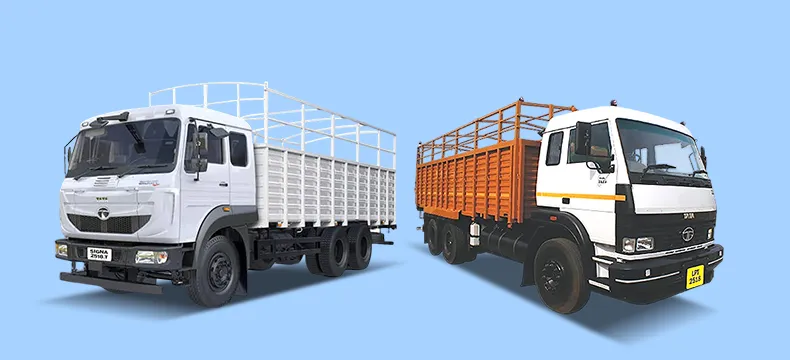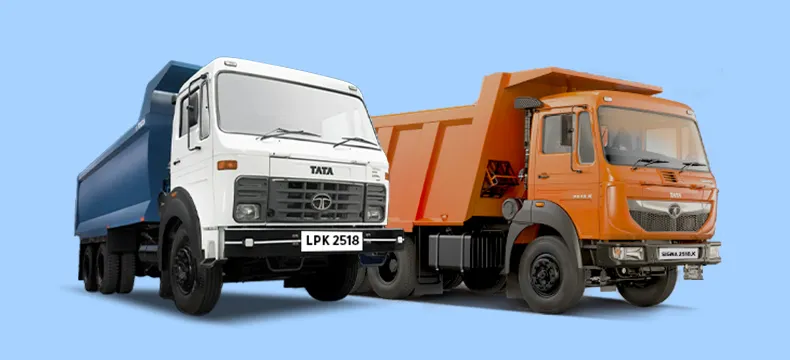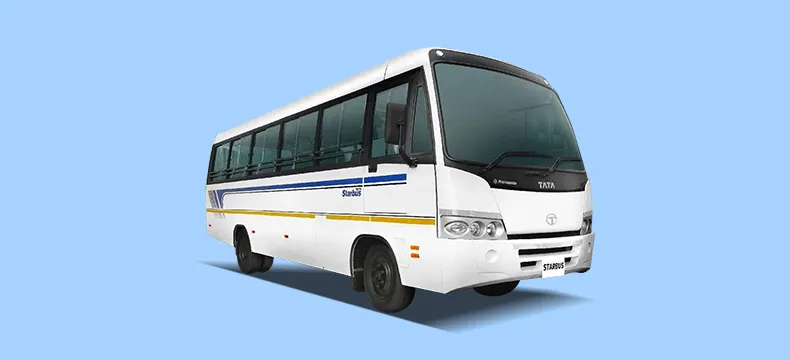11 Mar 2025

Understanding Heavy Trucks and Their Role in the Industry: Buyer’s Guide 2026
- Tata Motors
- 11 Mar 2025
- Commercial Vechicle
Introduction
Nestled between the lush green hills of the Chittagong Hill Tracts in the southeast and the sprawling plains stretching across most of the country, Bangladesh's diverse landscape presents unique challenges and opportunities for transportation. Rivers crisscross the nation, from the mighty Brahmaputra to the Ganges, creating a bustling network of waterways. However, heavy trucks are critical on land, where goods must be transported across the country’s expanding infrastructure.
As Bangladesh continues to experience rapid industrial growth, the need for reliable and robust transportation is at an all-time high. Whether it’s transporting construction materials for the rising skyscrapers of Dhaka or delivering goods to the bustling ports of Chittagong, heavy trucks provide the backbone for logistics in this dynamic country. In this blog, we will explore what exactly a heavy truck is, its key components, and its advantages to businesses in Bangladesh.
What is a Heavy Truck?
At its core, a heavy truck is a vehicle designed to carry substantial loads, typically those weighing more than 16 tonnes. These trucks often have powerful diesel engines, heavy-duty suspensions, and reinforced chassis to manage heavy cargo over long distances. In countries like Bangladesh, where the terrain can range from smooth highways to rugged rural roads, heavy trucks offer the durability and power required to ensure safe and efficient transportation.
Heavy trucks serve multiple industries—from construction, moving raw materials like sand, cement, and steel to agriculture, transporting large quantities of produce from rural farms to urban markets. Some popular models, like the Tata Motors Signa 2518.T and Tata LPT 2518, are well-known in Bangladesh for their reliability, efficiency, and adaptability across different sectors.
Essential Components of a Heavy-Duty Truck
When we talk about heavy-duty trucks in Bangladesh, it’s essential to understand the components that make these vehicles capable of handling challenging tasks daily. Here are the key parts that make up these powerful machines:
-
Engine:
The engine is the heart of the truck. In Bangladesh, where diesel is the most cost-effective fuel option, heavy trucks are typically equipped with high-torque diesel engines. These engines are built to provide consistent power, which is critical when carrying loads up steep hills or over long distances. Tata Motors' Cummins engine models, known for their reliability and fuel efficiency, are popular in the country.
-
Transmission:
A robust multi-speed transmission system ensures that heavy trucks can adjust their power output based on the terrain and load. Whether navigating narrow city streets or climbing hills, the transmission helps optimise fuel usage while ensuring the truck operates smoothly.
-
Suspension and Chassis:
A heavy-duty truck's suspension system absorbs shocks from uneven roads and helps maintain stability under heavy loads. A reinforced chassis gives the truck structural strength, allowing it to carry maximum loads without compromising safety or performance.
-
HPAS Steering:
Heavy trucks in Bangladesh often come with hydraulic power-assisted steering (HPAS) unlike light vehicles. This feature ensures that drivers can control the car with greater ease, even when navigating tight corners or driving through congested areas.
Advantages of Heavy-Duty Trucks
Investing in a heavy-duty truck offers businesses several advantages, especially in a country like Bangladesh, where efficient transport solutions are vital for economic growth. Let’s take a closer look at some of these benefits:
-
High Load Capacity:
One of the most significant advantages of heavy-duty trucks is their ability to carry large loads, reducing the need for multiple trips. For industries like construction, where timeliness is critical, this can lead to significant savings in both time and costs. Trucks like the Tata Signa models are designed to easily handle high-capacity loads.
-
Versatility:
Heavy trucks are highly versatile. Whether you’re transporting building materials, agricultural products, or industrial equipment, these vehicles can be adapted to suit the needs of various industries. The Tata Signa 2518.T, for example, is widely used across multiple sectors in Bangladesh due to its ability to handle different types of cargo.
-
Durability and Reliability:
Bangladesh's challenging terrain and weather conditions require vehicles that can withstand the elements. Heavy trucks, with their robust construction and advanced engineering, are built for longevity. This means fewer breakdowns, less downtime, and more consistent business performance.
-
Fuel Efficiency:
While heavy trucks consume more fuel than smaller vehicles, modern trucks are designed with advanced engine technologies that optimise fuel usage. In Bangladesh, where fuel costs can significantly impact operational expenses, trucks with efficient diesel engines, like those in Tata Motors' fleet, provide a crucial balance between performance and economy.
Conclusion
Bangladesh’s growing infrastructure demands transportation solutions that can meet the country’s logistical challenges. Heavy trucks are the backbone of the transportation industry, helping move goods efficiently across the country’s varied landscapes. With their high load capacity, reliability, and fuel efficiency, they are the preferred choice for the construction and agriculture industries.
Tata Motors offers some of the top-heavy truck models in Bangladesh, providing businesses with the performance they need to thrive in a competitive market. By understanding heavy trucks' essential components and benefits, businesses can make informed decisions that positively impact their operations.
FAQs
What are the different types of heavy trucks?
Several types of heavy trucks exist, including tipper trucks, flatbeds, and container trucks, each designed for specific types of cargo and industries.
What is the typical weight range for heavy trucks?
In Bangladesh, heavy trucks typically have a gross vehicle weight rating (GVWR) between 16 and 50 tonnes, depending on the truck model and its intended use.
What are the common uses for heavy trucks?
Heavy trucks are commonly used in construction, agriculture, logistics, and manufacturing industries. They transport goods over long distances and are capable of carrying substantial loads.
- Tags





















